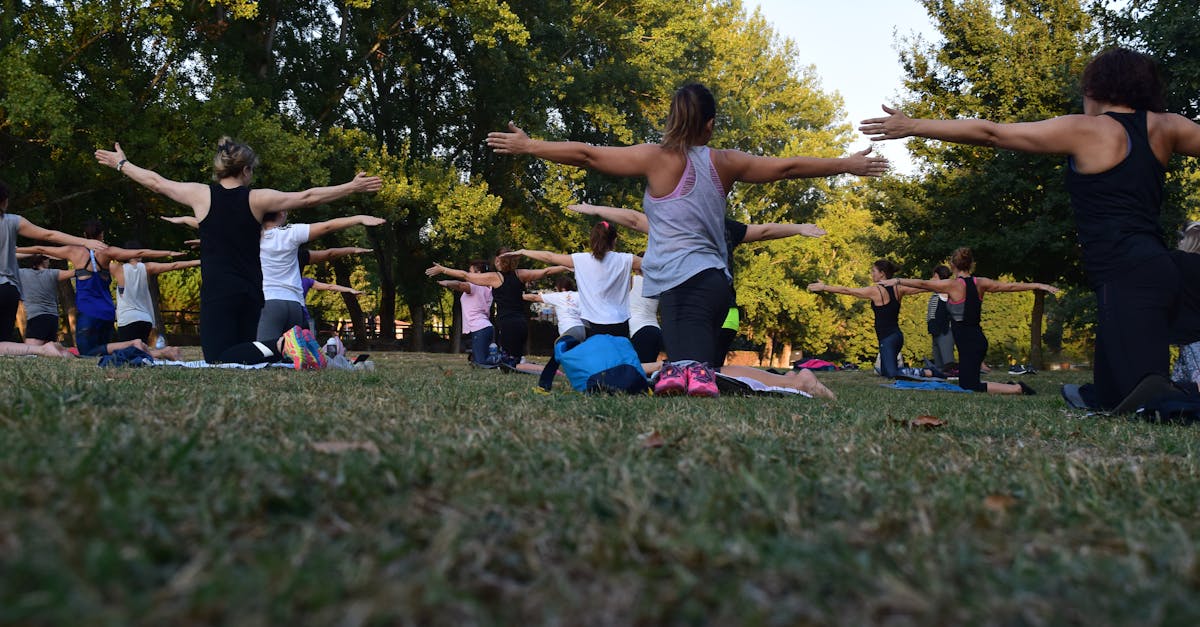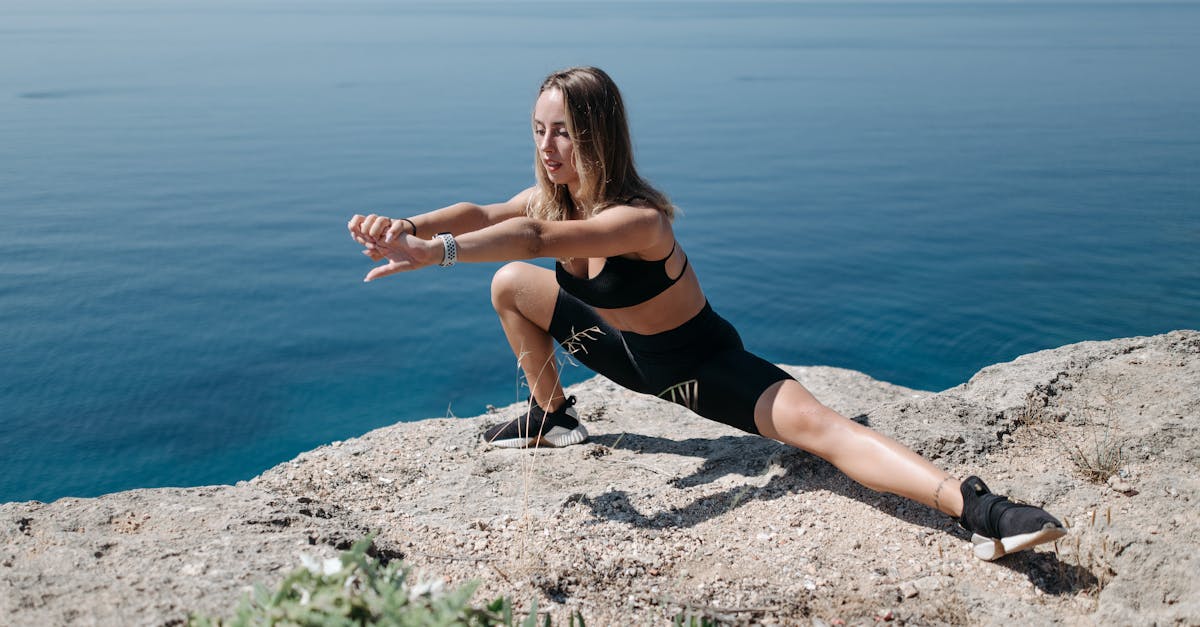Psoas Exercises for Low Back Pain: Strengthening for Core and Hip Health
Unveiling the Power of Psoas Exercises: A Journey Towards Low Back Pain Relief and Optimal Movement

The psoas muscle is a deep core muscle that plays a significant role in posture, movement, and overall well-being. Psoas exercises can alleviate back pain, improve flexibility, and enhance movement by strengthening and stabilizing this important muscle.
Understanding the psoas muscle and its connection to low back pain is crucial for effective management of this condition. This article explores the benefits of psoas exercises in detail, guiding readers through simple exercises that can be incorporated into their routines for optimal hip and core health.
Regular practice of psoas exercises can contribute to improved mobility, effective pain management, and overall well-being. By following the step-by-step instructions and safety tips outlined in this article, individuals can experience the benefits of a stronger and more flexible psoas muscle.
1. Understanding the Psoas Muscle
The psoas muscle is a long, deep muscle located in the lower back. It originates from the lumbar vertebrae and inserts onto the lesser trochanter of the femur. The psoas muscle is responsible for flexing the hip joint and rotating the thigh outward. It also plays a role in maintaining posture and balance.
When the psoas muscle is weak or tight, it can lead to low back pain. This is because the psoas muscle helps to stabilize the lumbar spine. When it is weak, the spine can become unstable and misaligned, which can lead to pain. Tightness in the psoas muscle can also pull the lumbar spine out of alignment, leading to pain.
Strengthening and stretching the psoas muscle can help to relieve low back pain. Strong psoas muscles help to stabilize the lumbar spine and keep it in proper alignment. Stretching the psoas muscle can help to improve flexibility and range of motion in the hip joint. This can also help to reduce pain.
2. Benefits of Psoas Exercises

Strengthening the psoas muscle can provide numerous benefits for overall health and well-being. These benefits include:
- Reduced low back pain: The psoas muscle plays a key role in stabilizing the lumbar spine. When the psoas muscle is weak, the spine can become unstable and misaligned, which can lead to pain. Strengthening the psoas muscle can help to stabilize the spine and reduce pain.
- Improved flexibility: The psoas muscle is a major hip flexor. When the psoas muscle is tight, it can restrict hip mobility. Stretching and strengthening the psoas muscle can help to improve flexibility and range of motion in the hip joint.
- Enhanced overall movement: The psoas muscle is involved in a variety of movements, including walking, running, and climbing stairs. Strengthening the psoas muscle can help to improve overall movement and coordination.
In addition to these benefits, strengthening the psoas muscle can also help to improve posture and balance. Strong psoas muscles help to keep the spine in proper alignment and prevent the pelvis from tilting forward. This can help to improve posture and reduce the risk of falls.
3. Effective Psoas Exercises
Bird Dog:
- Start on your hands and knees, with your hands shoulder-width apart and your knees hip-width apart.
- Extend your right arm forward and your left leg backward, keeping your back flat and your core engaged.
- Hold for 5-10 seconds, then return to the starting position.
- Repeat on the other side.
Kneeling Hip Flexor Stretch:
- Kneel on your right knee, with your left foot flat on the floor in front of you.
- Place your hands on your left thigh, just above your knee.
- Gently push your hips forward until you feel a stretch in your left hip flexor.
- Hold for 30 seconds, then release.
- Repeat on the other side.
Psoas March:
- Stand with your feet hip-width apart.
- Step forward with your right foot and bend your left knee, bringing it towards your chest.
- As you step forward, engage your core and slightly arch your back.
- Hold for 2 seconds, then return to the starting position.
- Repeat with your left leg.
These exercises can be modified to make them easier or more challenging depending on your fitness level. For example, you can perform the Bird Dog on your forearms instead of your hands, or you can hold the stretch for longer in the Kneeling Hip Flexor Stretch.
Bird Dog
The Bird Dog is a bodyweight exercise that targets the core and hip muscles. It is an effective exercise for improving core stability, hip mobility, and overall balance.
To perform the Bird Dog, start on your hands and knees, with your hands shoulder-width apart and your knees hip-width apart. Extend your right arm forward and your left leg backward, keeping your back flat and your core engaged. Hold for 5-10 seconds, then return to the starting position. Repeat on the other side.
The Bird Dog exercise is a challenging exercise, but it can be modified to make it easier or more difficult depending on your fitness level. For example, you can perform the exercise on your forearms instead of your hands, or you can hold the stretch for longer. You can also add a resistance band to the exercise to make it more challenging.
Kneeling Hip Flexor Stretch
The Kneeling Hip Flexor Stretch is a simple but effective stretch that can help to release tension in the psoas muscle and improve flexibility in the hip joint.
To perform the Kneeling Hip Flexor Stretch, kneel on your right knee, with your left foot flat on the floor in front of you. Place your hands on your left thigh, just above your knee. Gently push your hips forward until you feel a stretch in your left hip flexor. Hold for 30 seconds, then release.
The Kneeling Hip Flexor Stretch can be modified to make it easier or more challenging depending on your flexibility. For example, you can place a block or rolled-up towel under your back knee to reduce the stretch. You can also hold the stretch for longer to increase the intensity.
Psoas March
The Psoas March is a dynamic exercise that strengthens the psoas muscle and improves hip range of motion. It is a good exercise for people who want to improve their athletic performance or reduce their risk of injury.
To perform the Psoas March, stand with your feet hip-width apart. Step forward with your right foot and bend your left knee, bringing it towards your chest. As you step forward, engage your core and slightly arch your back. Hold for 2 seconds, then return to the starting position. Repeat with your left leg.
The Psoas March can be modified to make it easier or more challenging depending on your fitness level. For example, you can step forward with your knee bent to 90 degrees, or you can step forward with your knee bent to 45 degrees. You can also add a weight vest or hold dumbbells to make the exercise more challenging.
4. Safety Tips and Precautions

Safety Tips and Precautions:
- Proper form is essential: When performing psoas exercises, it is important to maintain proper form to avoid injury. This means keeping your back straight, engaging your core, and avoiding overextending your hips.
- Avoid overexertion: It is important to listen to your body and avoid overexertion. If you experience any pain, stop the exercise and consult with a healthcare professional.
- Seek professional advice: If you have any underlying health conditions, it is important to seek professional advice before starting any new exercise program. This is especially important if you have any back or hip pain.
By following these safety tips and precautions, you can help to minimize your risk of injury and maximize the benefits of psoas exercises.
5. Conclusion
Conclusion:
Psoas exercises are a safe and effective way to strengthen the psoas muscle, which can help to alleviate low back pain, improve flexibility, and enhance overall movement. By incorporating psoas exercises into your regular routine, you can help to improve your overall health and well-being.
If you are new to psoas exercises, it is important to start slowly and gradually increase the intensity and duration of your workouts over time. It is also important to listen to your body and stop if you experience any pain. If you have any underlying health conditions, be sure to consult with a healthcare professional before starting any new exercise program.
With regular practice, psoas exercises can help you to achieve a stronger, more flexible, and pain-free body.
Quiz
1. Which of the following is NOT a benefit of psoas exercises?
- (a) Reduced low back pain
- (b) Improved flexibility
- (c) Increased muscle mass
- (d) Enhanced overall movement
2. True or False: The psoas muscle is located in the lower back.
- (a) True
- (b) False
3. Which of the following exercises is NOT suitable for beginners?
- (a) Bird Dog
- (b) Kneeling Hip Flexor Stretch
- (c) Psoas March
- (d) Leg Press
4. True or False: It is important to engage your core when performing psoas exercises.
- (a) True
- (b) False
5. Which of the following is a safety tip for performing psoas exercises?
- (a) Avoid overexertion
- (b) Use heavy weights
- (c) Ignore proper form
- (d) Hold your breath
Answer Key
- (c) Increased muscle mass
- (a) True
- (d) Leg Press
- (a) True
- (a) Avoid overexertion
